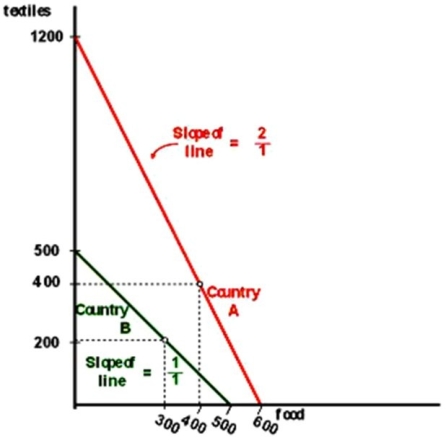Consider the no-trade input/output situation presented in the following table and graph for countries A and B.Assuming that free trade is legal; develop a scenario that will benefit the citizens of both countries.
Input/Output without Trade
| country | |||
| A | B | totoal | |
| I. total potintal output | |||
| (lbs. or yard; 000,000s) | |||
| food | 600 | 500 | 1,100 |
| textiles | 1,200 | 500 | 1,700 |
| II. consumption | |||
| (lbs. or yard; 000,000s) | |||
| food | 300 | 400 | 700 |
| textiles | 200 | 400 | 600 |

Definitions:
Anxious-ambivalent
A type of attachment style characterized by intense emotional bonds that are marked by a constant worry about the strength of those bonds.
Secure Attachment
A type of attachment style observed in development, characterized by feelings of safety and security in relationships, often resulting from consistent caregiver response.
Piaget's Stage Theory
A theory developed by Jean Piaget that outlines four stages of cognitive development in children: sensorimotor, preoperational, concrete operational, and formal operational.
Cognitive Development
The process of growth and change in intellectual capabilities that influence a person's behavior and learning ability throughout life.
Q9: Use the information below to answer
Q14: Corporate governance structure<br>A)varies a great deal across
Q42: A purely domestic firm that sources its
Q63: Intervention in the foreign exchange market is
Q87: The €/$ spot exchange rate is $1.50/€
Q90: Since students are more likely to procrastinate
Q130: With regard to intelligence tests, such as
Q153: The correlation of IQs between identical twins
Q154: Scientists in the area of artificial intelligence
Q181: Intellectual disability that is caused by metabolic